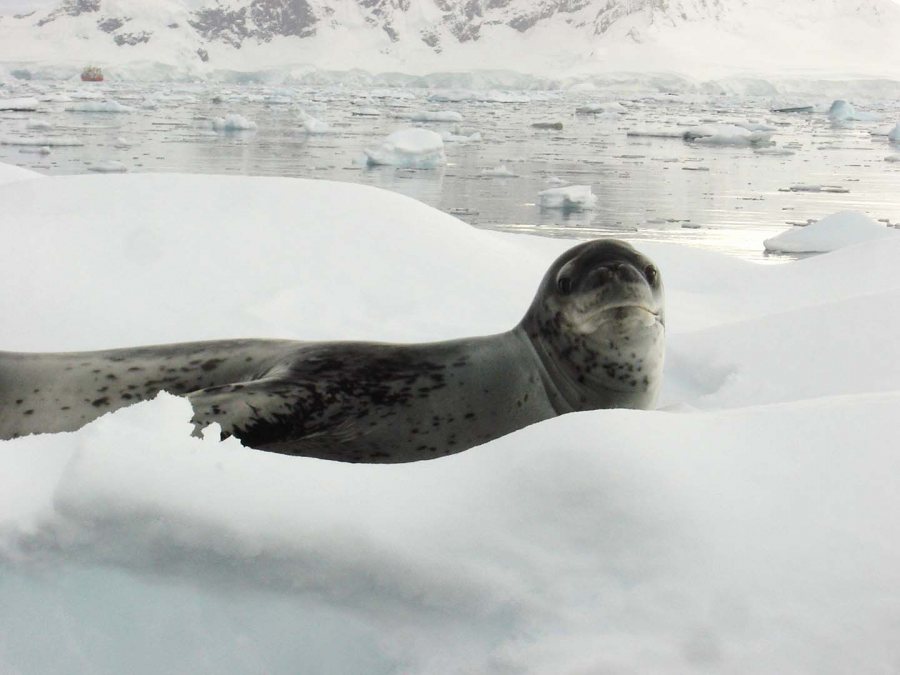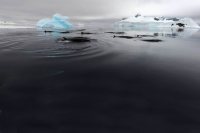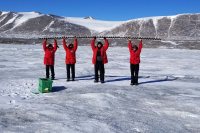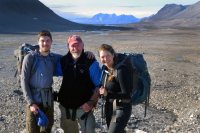
Doug Krause ’99 is all about leopard seals. A research biologist, he goes to Antarctica’s South Shetland Islands each year to study those grizzly bear-sized marine mammals (as well as a few other animals).
The Bates Club of Antarctica
This is Part 2 of a series about Bates alumni who spent this winter in Antarctica.
Part 1: If glaciers could talk, what would they say?
Part 3: Fossils and beach volleyball on a glacier
Part 4: The secrets of the lakes
The work involves a lot of catching, tagging, and releasing, as well as using drones and even attaching cameras to seals’ backs. What Krause finds can tell us a lot about the ecology of the Antarctic Peninsula, and how climate change affects it.
The question
How do leopard seals get their food?
The researcher
Krause is a research biologist with National Oceanic and Atmospheric Administration Fisheries. When he’s not in Antarctica, he’s based in southern California.
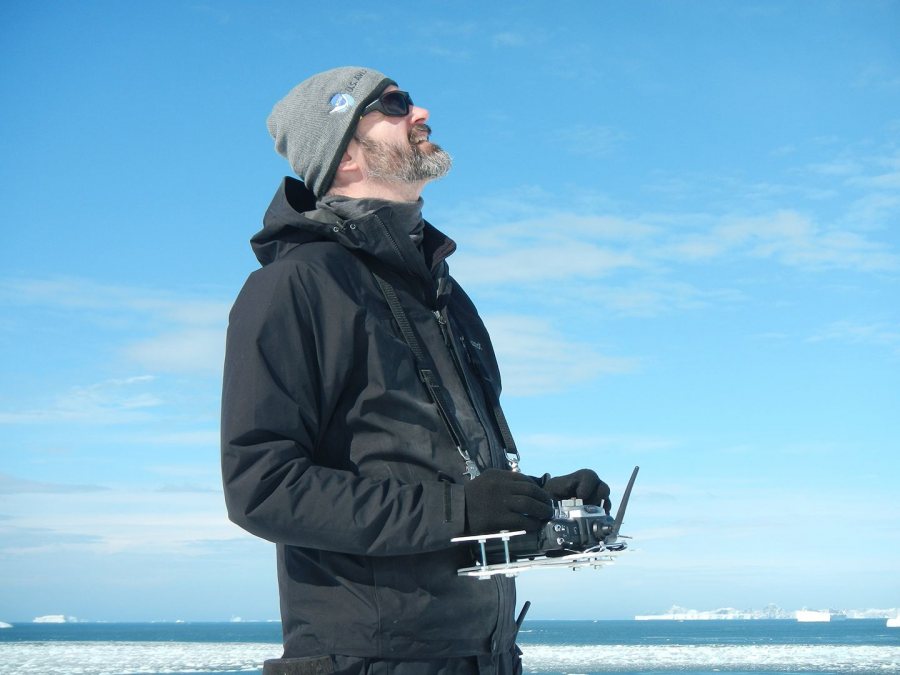
Doug Krause ’99 operates a drone to track leopard seals off the Antarctic Peninsula. (Courtesy of Doug Krause)
An Old Hat
Krause has made 12 trips to Antarctica since 2002.
The Bates connection
“My degree was in biology,” Krause says. “I had a professor, Will Ambrose, who was doing active research in the Arctic. That was very captivating to me; polar research and polar exploration were on my mind from that stage.
“After graduation, I had the opportunity to take a position as a field biologist in the Antarctic. It was supposed to be only for a couple of years starting in 2002, but I got down there and fell in love with it.”
The place
Cape Shirreff on Livingston Island, about 600 miles south of Chile.
Why leopard seals are just the coolest
As Krause told the Discovery Channel, “I can say, being completely unbiased, that leopard seals are the single most interesting marine mammal, or possibly animal, anywhere in the world.”
That’s because they’re at the top of the food chain, and they’re the only seals that eat other seals. They’re torpedo-shaped and streamlined like gray seals and harbor seals, but they’re also maneuverable like sea lions.
Why study leopard seals?
Leopard seals are “indicator species,” meaning you can learn a lot about the ecosystem by studying them.
“Our job is to understand the health of the whole marine ecosystem. Our work is mostly focused on antarctic krill — they are a crucial part near the base of the food web, and many other things depend on them as food: fish, whales, seals, penguins, birds.
“We track the populations of these indicator species, where they go, what they’re eating, and how hard they’re working to get that food. Understanding how hard they have to work and how they’re doing it gives us a better understanding of the krill itself.”
How he does it
Krause and his team use photography, including drone photography, and tagging to track populations and the seals’ diets.
“We track what they’re eating using a few technologies,” he says. “One is stable isotope analysis, where we take a bit of tissue and figure out what they’ve been eating from that. We also sift through their scats, which is really glamorous.”
What they found
Lately, the team has put cameras on the seals’ backs to record how they get their food. The resulting footage, which has been featured on National Geographic TV and 60 Minutes Australia, shows for the first time that leopard seals spend much of their time hunting, and they have individual hunting patterns. (In the clip below, a leopard seal ambushes an Antarctic fur seal pup).
“We learned that individuals have their own hunting strategy, and that is really important when you try to relate this back to ecosystem impact,” Krause says.
Antarctic living
Krause and his team live in cabin-like buildings with a shared kitchen. They take showers once a week using rainwater or melted snow, and communications are limited. An October snowstorm might mean a 35-minute dig to the outhouse.
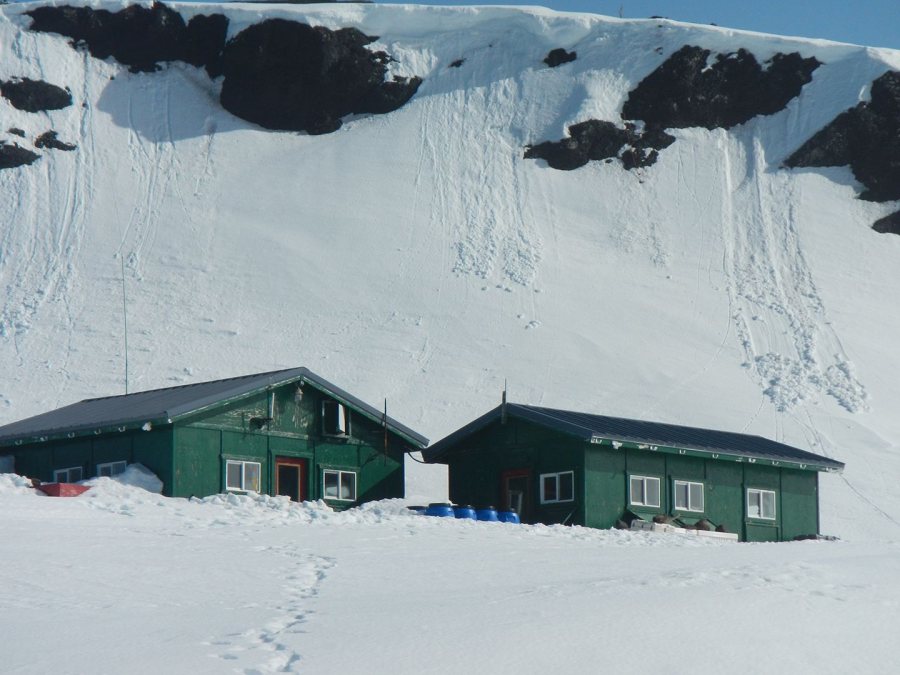
When he’s in Antarctica, Krause stays at the NOAA field camp on Cape Shirreff. (Courtesy of Doug Krause)
There are some upsides. “Every year, the exact same thing happens about two weeks after I get there,” Krause says. “I will get a bit of chest congestion and have some mucus for about a day, then it disappears. That process is essentially my body shedding the pollution that I’ve taken on a very regular basis in Southern California.”
Climate connection
The temperature in the Antarctic Peninsula has shot up as much as 7 degrees Celsius since the 1950s, leading to receding glaciers and rapid ecological change.
That’s why it’s so important to study leopard seals and what they eat, Krause says. “Watching how these ecosystems and how groups of animals respond to rapid change will provide valuable information for the ecological community on what effects we can expect throughout the rest of the globe.”
Following the Law
The Marine Mammal Protection Act limits capturing, killing, or harassing marine mammals in U.S. waters. It also applies to U.S. citizens working in international waters. Krause, being the latter, took his leopard seal photos and video in accordance with MMPA permit nos. 16472 and 20599.
Learn more
National Geographic and 60 Minutes Australia both featured Krause’s work with leopard seals.
Read more about Bates alumni in Antarctica
Bates Club of Antarctica: If glaciers could talk, what would they say?
Bates Club of Antarctica: Fossils, and beach volleyball on a glacier

